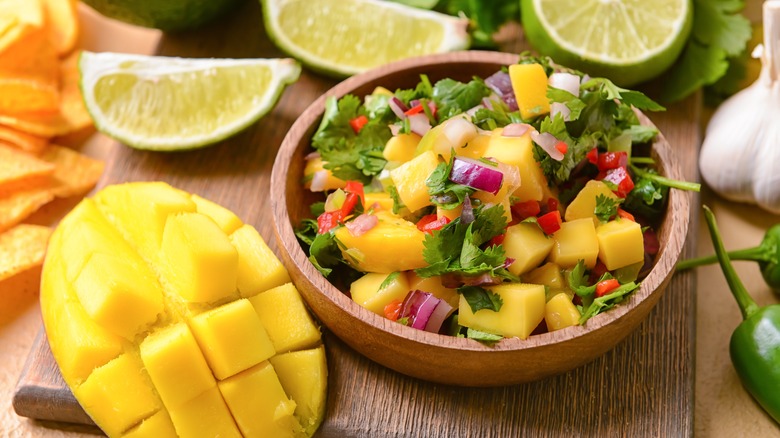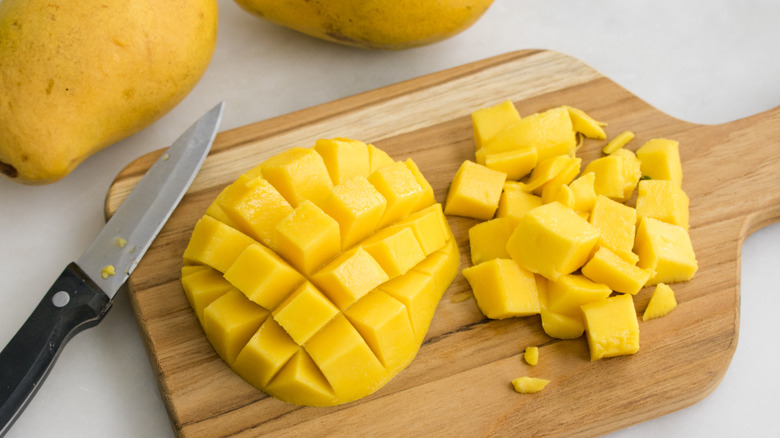For The Absolute Best Mango Salsa, The Ripeness Of Your Fruit Matters
Fresh and fruity mango salsa is wonderful for dipping chips, scooping onto pork belly tacos, garnishing over grilled shrimp with charred corn, and then some. Yet, while it takes several ingredients to make the salsa irresistible, chunks of deliciously honeyed mango are by far the most important component of the recipe. Naturally, this means selecting good fruit matters. As for what constitutes as good, remember, the more mature the mango the better.
Most recipes for mango salsa call for ripe varieties, which isn't a coincidence. Compared to versions that are underripe, mature fruit have had time to fully develop. Ripe mangoes boast a velvety consistency with rich and juicy flesh that varies vastly from immature fruit that is hard and fibrous. Additionally, ripe kinds are also less puckeringly sour and way more flavorful. Sweet to the point of syrupy, mature mango even displays notes of citrus, peach, and delicate florals. Given these textural and gustatory benefits, it's no wonder they are a mainstay in salsa.
Of course, selecting a ripe version isn't always easy. Rather than rely on color when picking out mangoes, we recommend seeking out firm, smooth-skinned fruit that gives when squeezed. Overripe varieties that are too soft will just become lost in a salsa. Likewise, sweet-smelling stems and traces of sap also indicate ripeness. However, if you can only find immature fruit at the market just give the mangoes a few days to ripen naturally.
Everything else you need to know about making a fantastic mango salsa
Aside from picking the ripest fruit possible, it's worth noting that some versions are simply sweeter than others. For example, juicy Ataulfo mangoes tend to be popular because of their custardy flesh and sweetly tangy depth. Candied Hadens or honeyed Kents are equally sugary options. Alternatively, for a tart twist, a firm and red-tinged Tommy Atkins can even be a great base for salsa. Regardless of the variety, always grab the most mature mangoes possible.
Once the sweetest type has been chosen, the next step is prepping the fruit. Although it can seem intimidating, cutting a mango is as easy as slicing off its curved sides. After placing them on a cutting board (skin-side down), score the flesh in a grid-like pattern. Flipping the mango, push out scored sections to easily slice away cubes of fruit from the skin. Trim off any remaining flesh and then toss the perfectly chopped pieces with other salsa ingredients.
Beyond syrupy mangoes, this condiment still needs some support. Introducing a medley of colorful ingredients with varying textures and flavors like crunchy red onions, hearty black beans, sweet corn, spicy jalapeño, or buttery avocado allows for a more interesting and balanced bite. Just be sure that the produce is equally fresh, uniformly chopped, and has adequate time to mix and mingle with the mango. Only then, can you delight in the most marvelous and easy mango salsa that you've possibly ever eaten.

